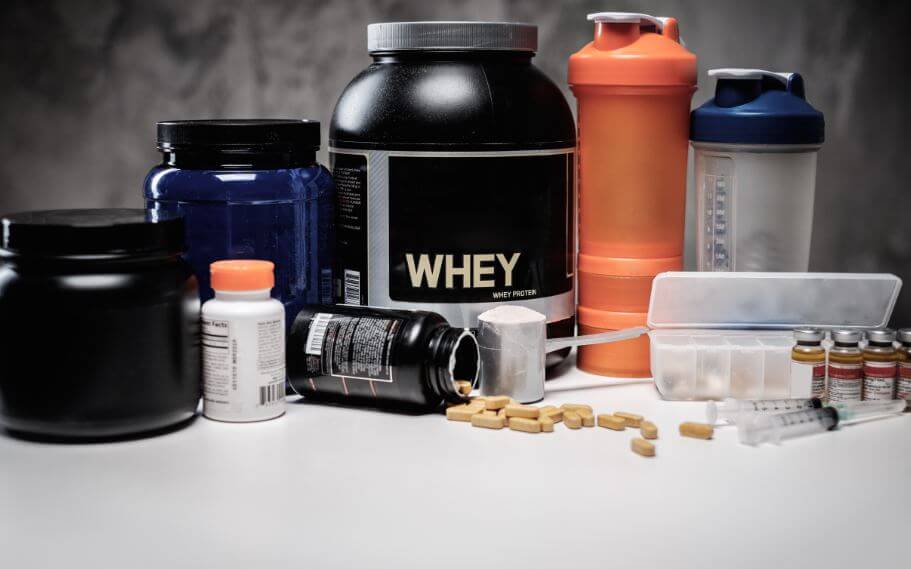Muscular Dysmorphia: An Exercise Obsession

Muscular dysmorphia, or bigorexia, is not an officially-recognized illness. However, it’s still a very real disorder that affects many people. People who suffer from muscular dysmorphia see themselves as weak, even if they’re in top physical condition.
Unfortunately, people can use exercise as different forms of unhealthy extremes. Weight loss or bigger, more defined muscles are often sources of motivation. Bigorexia leads people to work out excessively in addition to following poor diets.
Looking for the “perfect” figure is a normal goal. But there’s a problem when self-image begins to distort and the body obsession only brings about unhappiness, anguish, and constant dissatisfaction.
Following through with workouts, particularly weights, can be great as long as it’s in moderation. But becoming obsessed with the idea that your body is never good enough isn’t healthy at all.
Bigorexia

In psychology, muscular dysmorphia is also known as “reverse anorexia” or the “Adonis complex”.
Muscular dysmorphia is the obsessive idea that drives an individual to think that their body isn’t developed enough and that he or she needs to work on it constantly without even thinking about the dangers that could result.
While the disorder can affect both men and women, it more commonly affects the former.
The exact causes of muscular dysmorphia are unknown, but there are factors such as low-self esteem, hidden depression, chronic stress and others, that often play a role.
How do you know if it’s muscular dysmorphia?
People who suffer from bigorexia can end up pushing their real-life priorities aside to exercise. Workouts become the center of their worlds and it inevitably changes their lifestyle and harms their relationships.
Failing to find satisfaction in their physical appearance, people with muscular dysmorphia excessively consume supplements and muscle-developing products. They might also abuse steroids and other substances while constantly comparing their bodies and muscles with others. These are some of the signs that a person might show if they have bigorexia.

Unlike anorexia, people who suffer from bigorexia think they’re too small and feel they need to do all that they can to change that. However, the dissatisfaction, need to control their body, distorted self-image and obsessive behavior are all akin to cases of anorexia.
Who can it affect?
Unfortunately, athletes are very vulnerable to developing these kinds of disorders. Athletes must meet the expectations in the gym or on the field, but they also see the expectations for bodies in social media and in real life. Just with any other body dysmorphic disorder, these two variables create a vicious cycle.
Muscular dysmorphia isn’t easy to flag

From a simple glance, muscular dysmorphia isn’t easy to spot because people who suffer from it don’t look sickly. It’s the exact opposite; they look great. But beneath that healthy-looking exterior, they’re holding a lot of negative emotions and ideas inside.
It can also be difficult to help someone with bigorexia because many will deny that they have a problem. But, with the right approach, help is available.
Remember, as with everything in life, balance is fundamental. Going to the extremes to reach a goal is never healthy. Staying fit is great but obsessing about achieving perfection is crossing the line.
Muscular dysmorphia, or bigorexia, is not an officially-recognized illness. However, it’s still a very real disorder that affects many people. People who suffer from muscular dysmorphia see themselves as weak, even if they’re in top physical condition.
Unfortunately, people can use exercise as different forms of unhealthy extremes. Weight loss or bigger, more defined muscles are often sources of motivation. Bigorexia leads people to work out excessively in addition to following poor diets.
Looking for the “perfect” figure is a normal goal. But there’s a problem when self-image begins to distort and the body obsession only brings about unhappiness, anguish, and constant dissatisfaction.
Following through with workouts, particularly weights, can be great as long as it’s in moderation. But becoming obsessed with the idea that your body is never good enough isn’t healthy at all.
Bigorexia

In psychology, muscular dysmorphia is also known as “reverse anorexia” or the “Adonis complex”.
Muscular dysmorphia is the obsessive idea that drives an individual to think that their body isn’t developed enough and that he or she needs to work on it constantly without even thinking about the dangers that could result.
While the disorder can affect both men and women, it more commonly affects the former.
The exact causes of muscular dysmorphia are unknown, but there are factors such as low-self esteem, hidden depression, chronic stress and others, that often play a role.
How do you know if it’s muscular dysmorphia?
People who suffer from bigorexia can end up pushing their real-life priorities aside to exercise. Workouts become the center of their worlds and it inevitably changes their lifestyle and harms their relationships.
Failing to find satisfaction in their physical appearance, people with muscular dysmorphia excessively consume supplements and muscle-developing products. They might also abuse steroids and other substances while constantly comparing their bodies and muscles with others. These are some of the signs that a person might show if they have bigorexia.

Unlike anorexia, people who suffer from bigorexia think they’re too small and feel they need to do all that they can to change that. However, the dissatisfaction, need to control their body, distorted self-image and obsessive behavior are all akin to cases of anorexia.
Who can it affect?
Unfortunately, athletes are very vulnerable to developing these kinds of disorders. Athletes must meet the expectations in the gym or on the field, but they also see the expectations for bodies in social media and in real life. Just with any other body dysmorphic disorder, these two variables create a vicious cycle.
Muscular dysmorphia isn’t easy to flag

From a simple glance, muscular dysmorphia isn’t easy to spot because people who suffer from it don’t look sickly. It’s the exact opposite; they look great. But beneath that healthy-looking exterior, they’re holding a lot of negative emotions and ideas inside.
It can also be difficult to help someone with bigorexia because many will deny that they have a problem. But, with the right approach, help is available.
Remember, as with everything in life, balance is fundamental. Going to the extremes to reach a goal is never healthy. Staying fit is great but obsessing about achieving perfection is crossing the line.
All cited sources were thoroughly reviewed by our team to ensure their quality, reliability, currency, and validity. The bibliography of this article was considered reliable and of academic or scientific accuracy.
- Serna de Pedro, I. (2004). Anorexia y vigorexia. Retrieved from http://sfx.uoc.edu/uoc?url_ver=Z39.88-2004&rft_val_fmt=info:ofi/fmt:kev:mtx:article&genre=article&spage=3&atitle=Anorexia+y+vigorexia&title=Monografías+de+psiquiatría&issn=0214-4220&aufirst=Inmaculada+de+la&issue=2&volume=16&rfr_id=info:sid/dialnet:articulos&epage=15&date=2004&aulast=Serna+de+Pedro
- Muñoz Sánchez, R., & Martínez Moreno, A. (2007). Ortorexia y vigorexia: ¿nuevos trastornos de la conducta alimentaria? Trastornos de La Conducta Alimentaria, 5(5), 457–482. https://doi.org/10.1016/S0211-3449(07)74692-1
- Camargo, T. P. P. D., Costa, S. P. V. D., Uzunian, L. G., & Viebig, R. F. (2008). Vigorexia: revisão dos aspectos atuais deste distúrbio de imagem corporal. Revista Brasileira de Psicologia Do Esporte, 2(1981–9145), 01–15. Retrieved from http://pepsic.bvsalud.org/scielo.php?script=sci_arttext&pid=S1981-91452008000100003&lng=pt&nrm=iso&tlng=pt
This text is provided for informational purposes only and does not replace consultation with a professional. If in doubt, consult your specialist.








